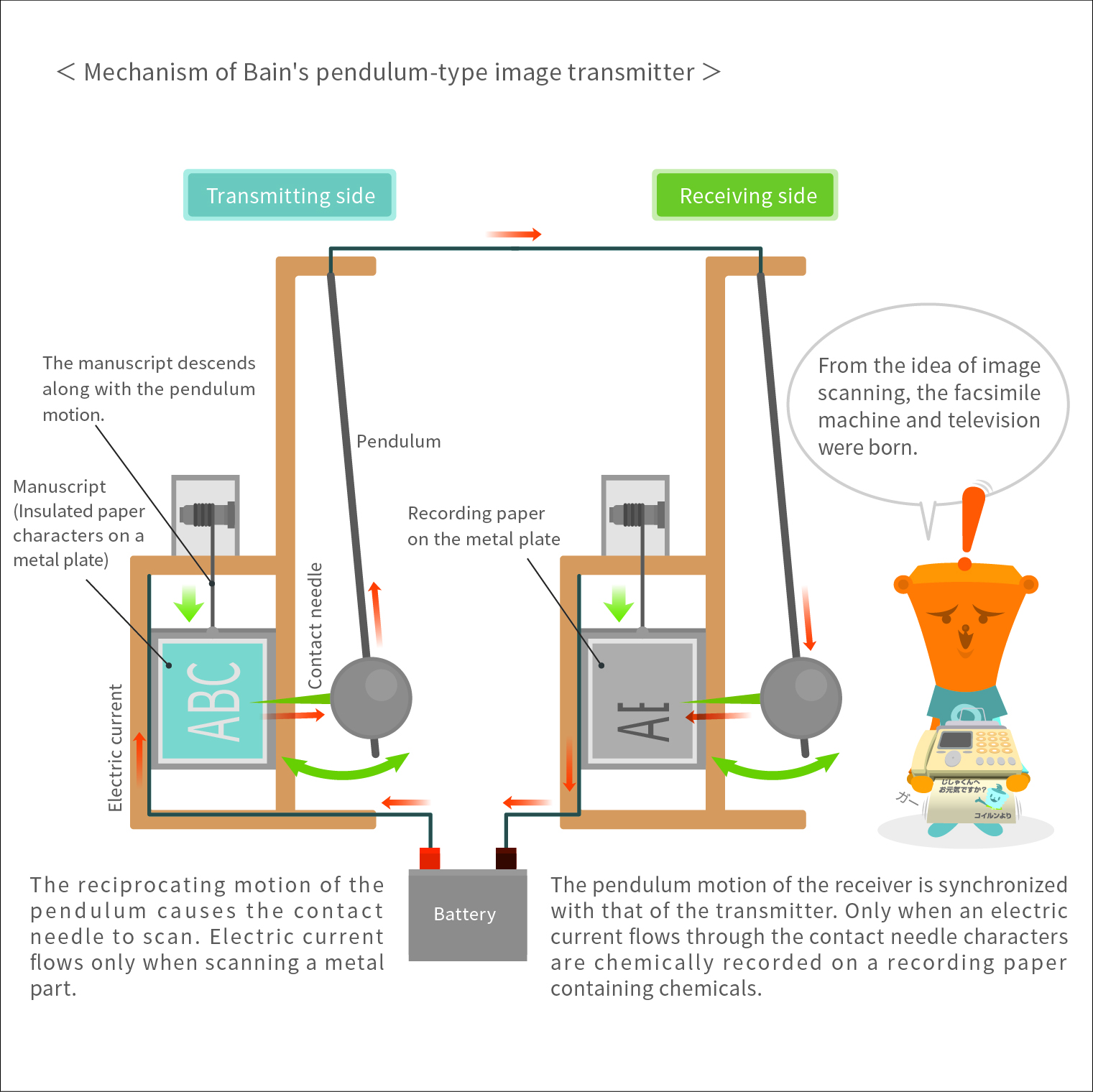The Wonders of Electromagnetism
From Thermometers to Robotics: The Evolution and Expanding Role of Thermal Sensors

In our everyday lives, there are countless moments where understanding temperature is vital—from assessing the weather to select our outfits, to measuring cooking oil temperature for perfect deep frying or monitoring our health through body temperature readings. Thermal sensors, essential in detecting temperature changes that are invisible to us, have significantly advanced in their technology.
Bimetallic strips are the seasoned veterans of thermal sensors
There exists a traditional Japanese weather expression, Sankan Shion, denoting a pattern of winter temperature fluctuations: approximately three days of intense cold followed by roughly four days of milder, warmer weather. The term, also used in haiku to symbolize winter, has witnessed disruptions in this pattern in recent times, possibly due to the effects of global warming.
A thermometer for measuring the ambient temperature is called a kandankei in Japanese. During Japan’s Edo period, inventors, including Hiraga Gennai, known for creating an electrostatic generator called the Elekiter, poured immense passion into crafting thermometers. However, their curiosity extended beyond meteorological observations. It is believed that the meticulous temperature management required for sericulture—raising silkworms for silk production, a thriving industry in the Edo period—was a significant driver. Given silkworms’ sensitivity to cold, particularly close attention was paid to temperature fluctuations.
Udagawa Yoan, a nineteenth-century Japanese scholar of Rangaku—Western scientific knowledge conveyed through Dutch traders during Japan’s isolation period—devised a unique thermometer utilizing a bimetallic strip composed of iron and brass. A bimetallic strip laminates two metal plates with different coefficients of thermal expansion, meaning they expand or contract at different rates with temperature changes. The metal with the higher coefficient undergoes larger changes in size, forcing the strip to warp. The warping of the strip moved a needle on a dial, enabling temperature measurement.
Bimetallic thermometers, based on the same principle, remain a fixture in our everyday lives due to the enduring popularity of their retro charm as interior decor items. They are built around bimetallic strips wound into flat spiral springs, which allows the subtle expansion and contraction of the strips to be amplified into large needle movements while maintaining a compact design. Cooking thermometers also utilize bimetallic strips, cleverly shaped into helixes to fit inside narrow housings. These thermometers are even integrated into some chopsticks for frying tempura.
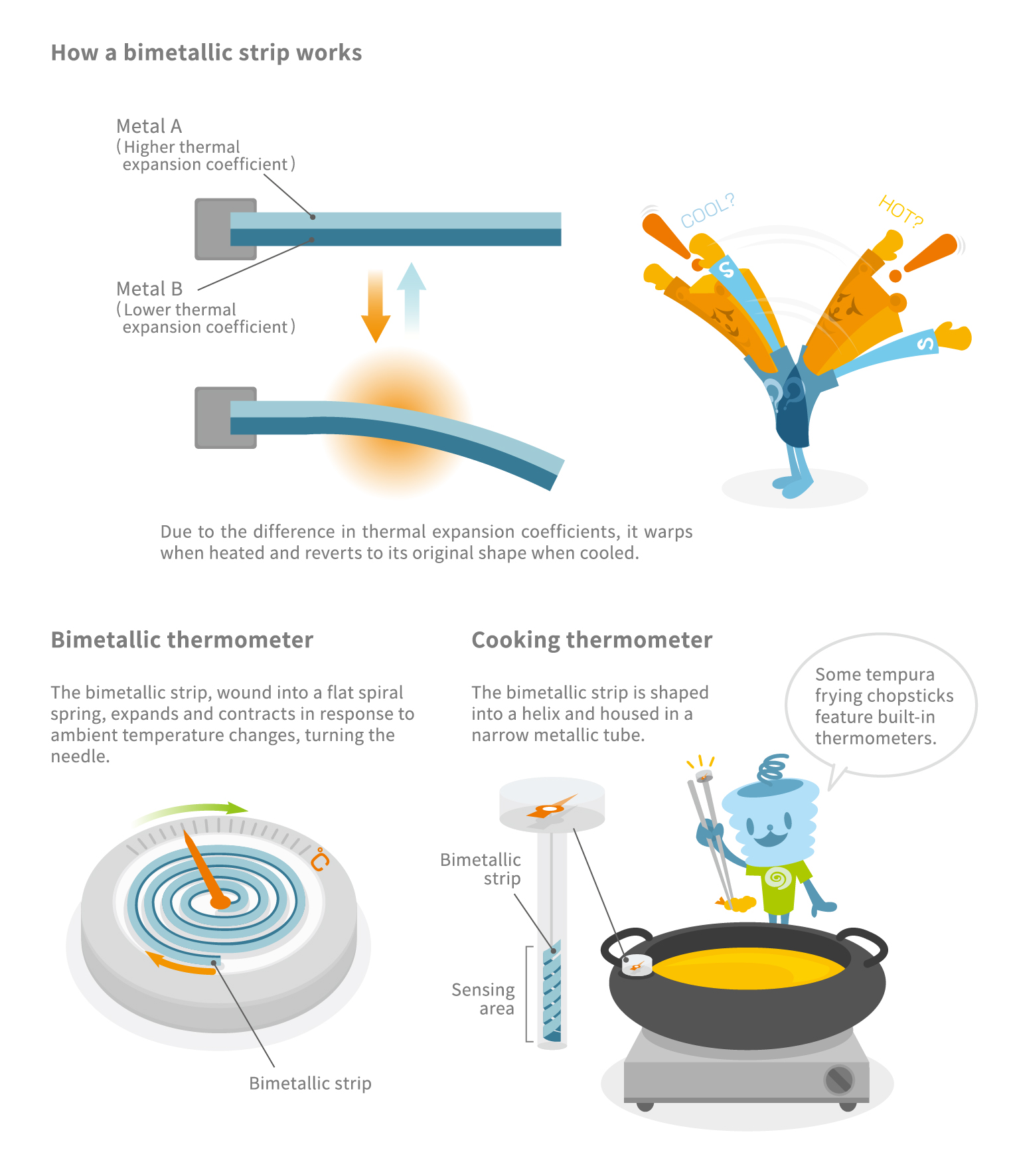
The electric kotatsu—a traditional Japanese wintertime table with a heater on the underside and draped with a duvet—has long included a thermostat, which utilizes the warping effect of a bimetallic strip, for temperature regulation. As the temperature rises, the strip warps, pushing open an electrical contact and turning off the heater. Conversely, as the temperature drops, the strip reverts to its original shape, closing the contact and turning the heater back on. It’s a remarkably simple yet effective mechanism.
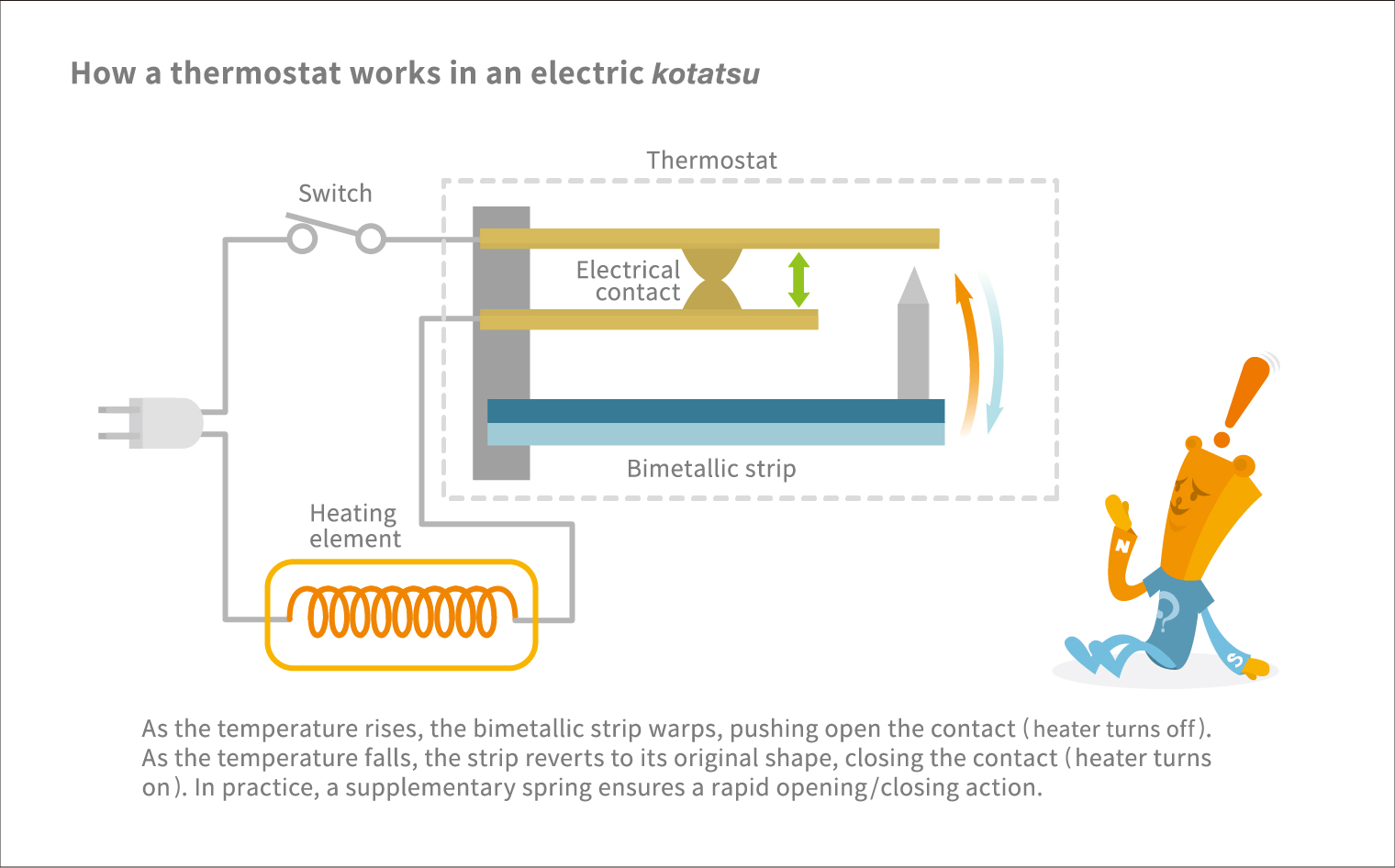
Ferrite enabled the thermal switch mechanism in electric rice cookers
Introduced in the mid-1950s, electric rice cookers revolutionized Japanese kitchens, gaining overwhelming popularity among homemakers. The key feature of an electric rice cooker was a mechanism that automatically switched itself off when the rice finished cooking. Unlike cooking rice in a pot over a stove, where one needs to adjust the heat attentively, an electric cooker eliminates the risk of overcooking and burning the rice or starting a fire by forgetting to turn off the heat.
The thermal switch in an electric rice cooker cleverly employs ferrite and magnets. Being a magnetic material, ferrite normally attracts magnets, but once it reaches a certain temperature (the Curie temperature), it loses its magnetic properties and no longer attracts magnets. In electric rice cookers, a piece of ferrite is positioned beneath the pot. When the cooker is turned on, a magnet adheres to the ferrite and continues to do so while the cooking continues. However, as the cooking nears completion and the rice’s moisture content drops, the temperature at the bottom of the pot begins to rise, eventually causing ferrite to lose its magnetic properties. At that point, the magnet is retracted by the force of a spring, turning the cooker off. It’s another simple yet ingenious mechanism.
In later years, electric rice cookers evolved into electronic versions, incorporating features like keeping the rice warm after cooking, timers, and precise heat control using microcontrollers. Yet, the essence of these advancements traces back to the original mechanism that utilized ferrite and magnets for the thermal switch.
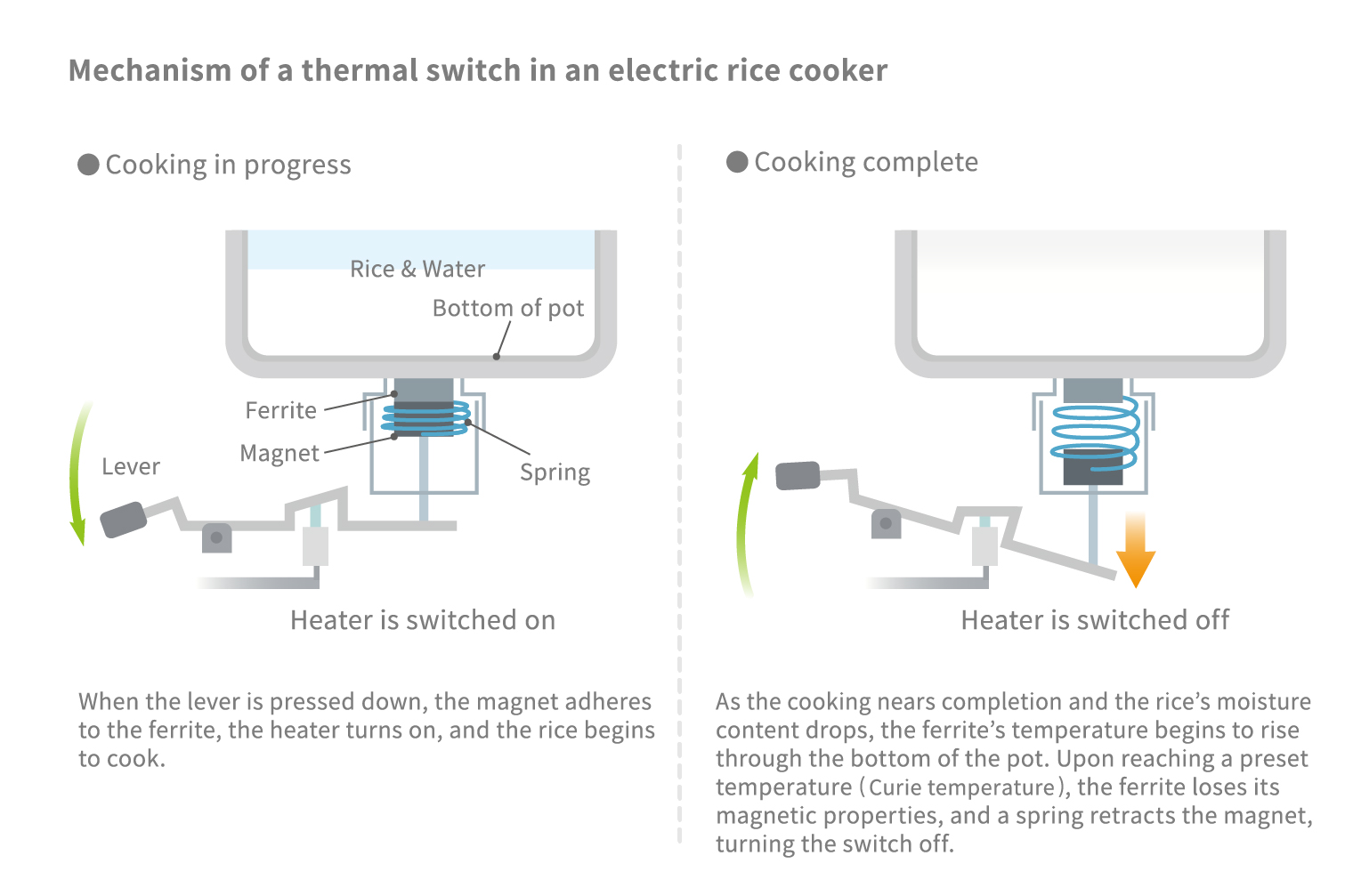
NTC thermistors drove the modernization of thermometers
NTC thermistors have played a pivotal role in the evolution of medical thermometers. An NTC thermistor is a thermal sensor that works well with control circuits built around transistors and ICs. “Thermistor” is a portmanteau of the words “thermal” and “resistor” and refers to a resistor sensitive to temperature changes. “NTC” stands for “Negative Temperature Coefficient,” denoting the property where electrical resistance decreases as temperature rises. NTC thermistors are thermal sensors produced from semiconductor ceramic materials with this property.
Traditional thermometers, such as a mercury-in-glass thermometer, relied on the property of mercury to expand in response to heat. Encased in a flat glass enclosure with a narrow glass tube connected to a bulb containing mercury, the temperature was determined by observing the height of the expanded column of mercury within the tube. While these thermometers gained popularity for their compact size and accuracy, obtaining an accurate reading required waiting for the mercury’s temperature to equilibrate with the body, often taking about 10 minutes. Additionally, the hazardous nature of mercury posed risks during breakage or disposal.
In contrast, an electronic medical thermometer is a compact device comprising an NTC thermistor enclosed in the tip, alongside internal circuitry including an oscillation circuit, an evaluation circuit, a microcontroller, a liquid crystal display, and a button cell. It operates by converting the NTC thermistor’s resistance value, which varies with temperature, into a frequency value and comparing it with a reference value to determine the temperature.
Electronic medical thermometers provide rapid readings within seconds to several dozen seconds. This swift response is made possible by microcontrollers, which execute highly accurate prediction models that extrapolate the initial temperature measurements and estimate the final equilibrium temperature. Their ability to offer faster measurements and eliminate mercury-related hazards even in the event of breakage has led to the replacement of traditional mercury-in-glass thermometers for home use.
NTC thermistors are also instrumental to temperature compensation functions found in electronic circuits. Electronic circuits utilizing components like transistors or crystal oscillators can experience slight instability when exposed to temperature fluctuations. The circuit’s operational stability is reinforced by incorporating NTC thermistors, which vary their resistance with temperature. This concept is referred to as temperature compensation.
While NTC thermistors were predominantly of the single-plate type that sandwiched semiconductor ceramic material between two electrodes in the past, the multilayer chip type is now prevalent due to the demand for smaller and lighter electronic devices. Since thermistors are made of semiconductor ceramics, achieving both miniaturization and desired characteristics requires highly advanced technologies. The multilayer chip construction offers unique advantages, such as the ability to attain different characteristics through material selection and by varying the overlap of internal electrodes by design. Today, NTC thermistors are widely employed in electronic devices like smartphones and laptops, as well as in cars and robots, enabling precise temperature control and thermal sensing across a variety of domains.
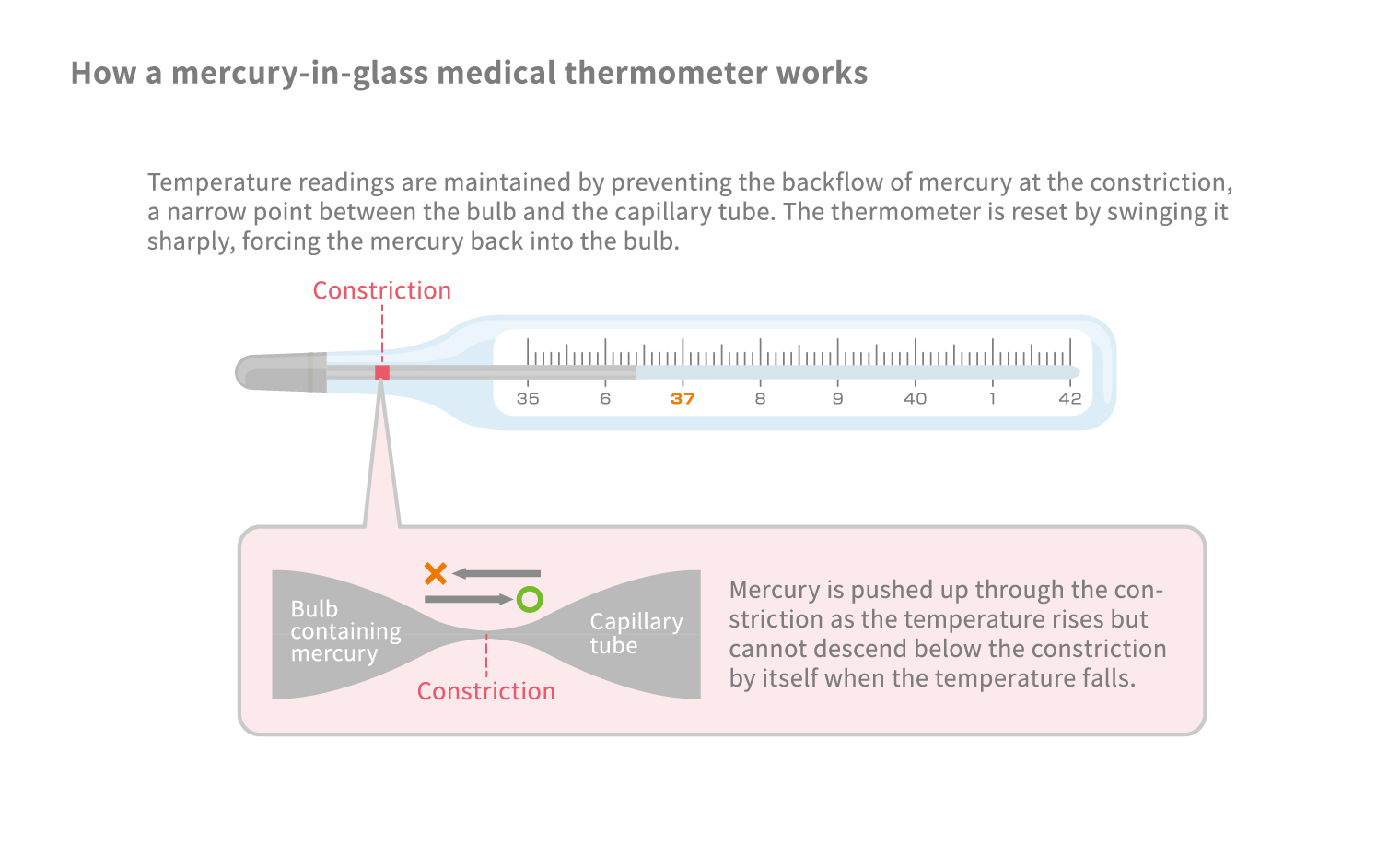
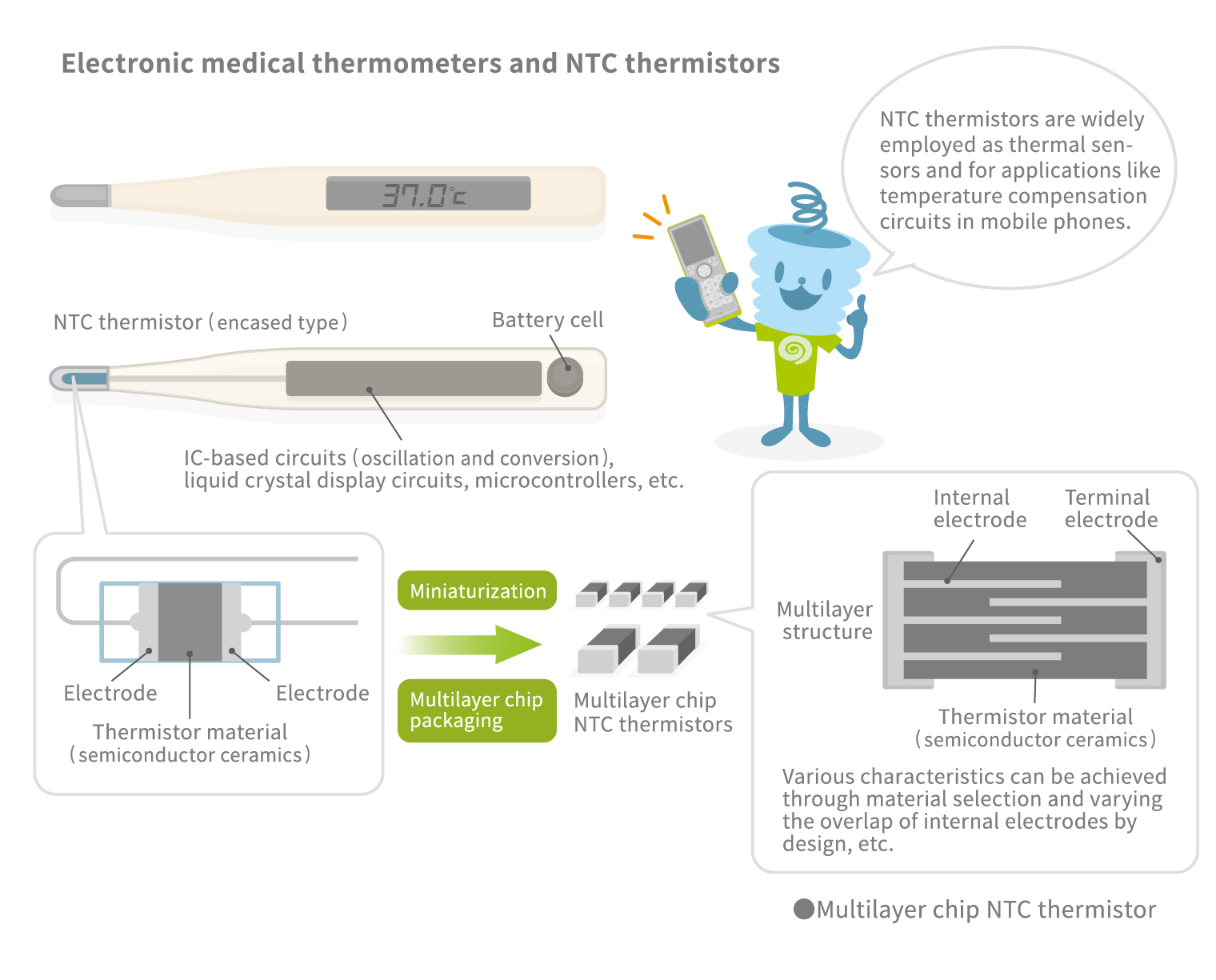
TDK is a comprehensive electronic components manufacturer leading the world in magnetic technology




